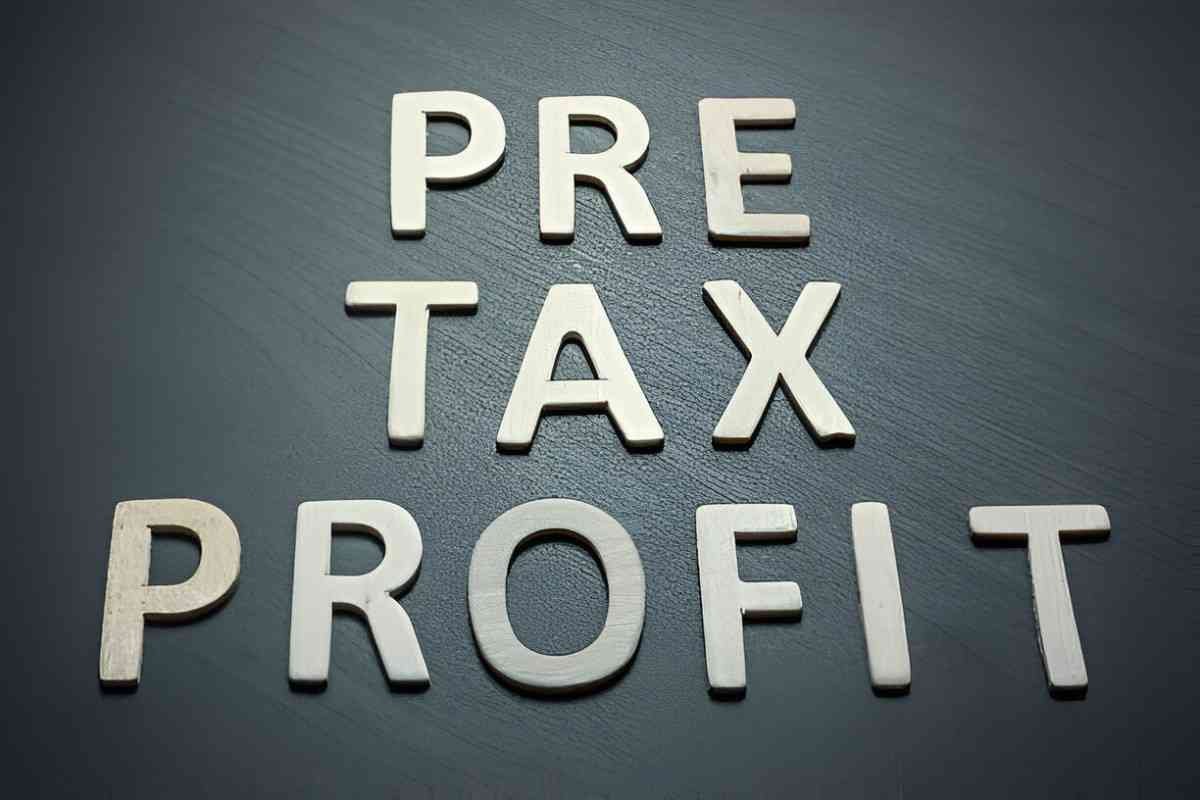As someone who has spent years analyzing financial statements, I know that pre-tax profit is one of the most critical metrics for assessing a company’s performance. It reveals how efficiently a business operates before government obligations come into play. In this article, I will break down what pre-tax profit means, how to calculate it, and why it matters for investors, managers, and tax professionals.
Table of Contents
What Is Pre-Tax Profit?
Pre-tax profit, also known as earnings before tax (EBT), measures a company’s profitability before accounting for income taxes. It shows how much money a business generates from its operations, excluding tax influences. This metric helps compare companies across different tax jurisdictions or assess performance without tax policy distortions.
Unlike net profit, which deducts all expenses, pre-tax profit only considers operational costs, interest, and depreciation—not taxes. This makes it a useful benchmark for evaluating core business efficiency.
How to Calculate Pre-Tax Profit
The formula for pre-tax profit is straightforward:
\text{Pre-Tax Profit} = \text{Revenue} - \text{Operating Expenses} - \text{Interest} - \text{Depreciation and Amortization}Alternatively, if you start with net income, you can add back taxes to arrive at pre-tax profit:
\text{Pre-Tax Profit} = \text{Net Income} + \text{Income Taxes}Example Calculation
Let’s say Company XYZ reports the following figures for the year:
- Revenue: $1,000,000
- Operating Expenses: $600,000
- Interest Expense: $50,000
- Depreciation: $30,000
- Taxes Paid: $70,000
Using the first formula:
\text{Pre-Tax Profit} = \$1,000,000 - \$600,000 - \$50,000 - \$30,000 = \$320,000If we only had net income and taxes, we could compute it as:
\text{Net Income} = \$250,000 \text{Pre-Tax Profit} = \$250,000 + \$70,000 = \$320,000Both methods yield the same result, confirming consistency.
Why Pre-Tax Profit Matters
1. Better Comparison Across Companies
Tax rates vary by state and country. A company in Texas (no state income tax) may appear more profitable than one in California (high state taxes) when comparing net income. Pre-tax profit eliminates this distortion, allowing fairer comparisons.
2. Assessing Operational Efficiency
Since taxes depend on government policies rather than management decisions, pre-tax profit focuses purely on business performance. Investors use this metric to evaluate how well executives control costs and generate revenue.
3. Tax Planning and Strategy
Businesses analyze pre-tax profit to strategize tax-saving moves, such as:
- Accelerating depreciation
- Utilizing tax credits
- Shifting income to lower-tax jurisdictions
4. Loan and Investment Decisions
Lenders examine pre-tax profit to assess a company’s ability to repay debt. Since interest is deducted before taxes, a high pre-tax profit indicates strong debt coverage.
Pre-Tax Profit vs. Other Profit Metrics
To avoid confusion, let’s compare pre-tax profit with similar terms:
| Metric | Formula | Key Difference |
|---|---|---|
| Gross Profit | Revenue – COGS | Excludes operating expenses |
| Operating Profit | Revenue – COGS – Operating Expenses | Excludes interest and taxes |
| Pre-Tax Profit | Revenue – All Expenses Except Taxes | Includes interest but excludes taxes |
| Net Profit | Revenue – All Expenses Including Taxes | The bottom-line profit |
Illustration: Profit Hierarchy
Consider a company with:
- Revenue: $500,000
- COGS: $200,000
- Operating Expenses: $150,000
- Interest: $20,000
- Taxes: $30,000
The profit metrics would be:
- Gross Profit: \$500,000 - \$200,000 = \$300,000
- Operating Profit: \$300,000 - \$150,000 = \$150,000
- Pre-Tax Profit: \$150,000 - \$20,000 = \$130,000
- Net Profit: \$130,000 - \$30,000 = \$100,000
This breakdown shows how each metric narrows down profitability.
Factors Affecting Pre-Tax Profit
Several variables influence pre-tax profit, including:
1. Revenue Growth
Higher sales increase pre-tax profit, assuming costs don’t rise disproportionately.
2. Cost Control
Reducing operating expenses (e.g., rent, salaries) directly boosts pre-tax earnings.
3. Interest Expenses
Companies with high debt face larger interest payments, reducing pre-tax profit.
4. Depreciation Methods
Using accelerated depreciation lowers taxable income early on, impacting pre-tax profit timing.
Real-World Application: Analyzing a Public Company
Let’s examine Apple Inc.’s 2022 financials (simplified):
| Item | Amount (in billions) |
|---|---|
| Revenue | $394.33 |
| COGS | $223.55 |
| Operating Expenses | $43.88 |
| Interest Expense | $2.93 |
| Taxes | $16.10 |
Calculating pre-tax profit:
\text{Pre-Tax Profit} = \$394.33 - \$223.55 - \$43.88 - \$2.93 = \$123.97 \text{ billion}This figure helps investors compare Apple’s performance with Microsoft or Google, regardless of differing tax rates.
Limitations of Pre-Tax Profit
While useful, pre-tax profit has drawbacks:
- Ignores Tax Impact: Companies with tax advantages may seem less profitable pre-tax.
- Excludes Non-Operational Items: Gains/losses from asset sales aren’t always reflected.
- Industry-Specific Variances: Capital-intensive firms (e.g., airlines) have high depreciation, skewing comparisons.
Conclusion
Pre-tax profit is a powerful tool for evaluating business performance without tax distortions. By understanding how to calculate and interpret it, I can make better investment decisions, assess operational efficiency, and plan tax strategies effectively. Whether you’re an investor, manager, or accountant, mastering this concept provides deeper insights into financial health.





